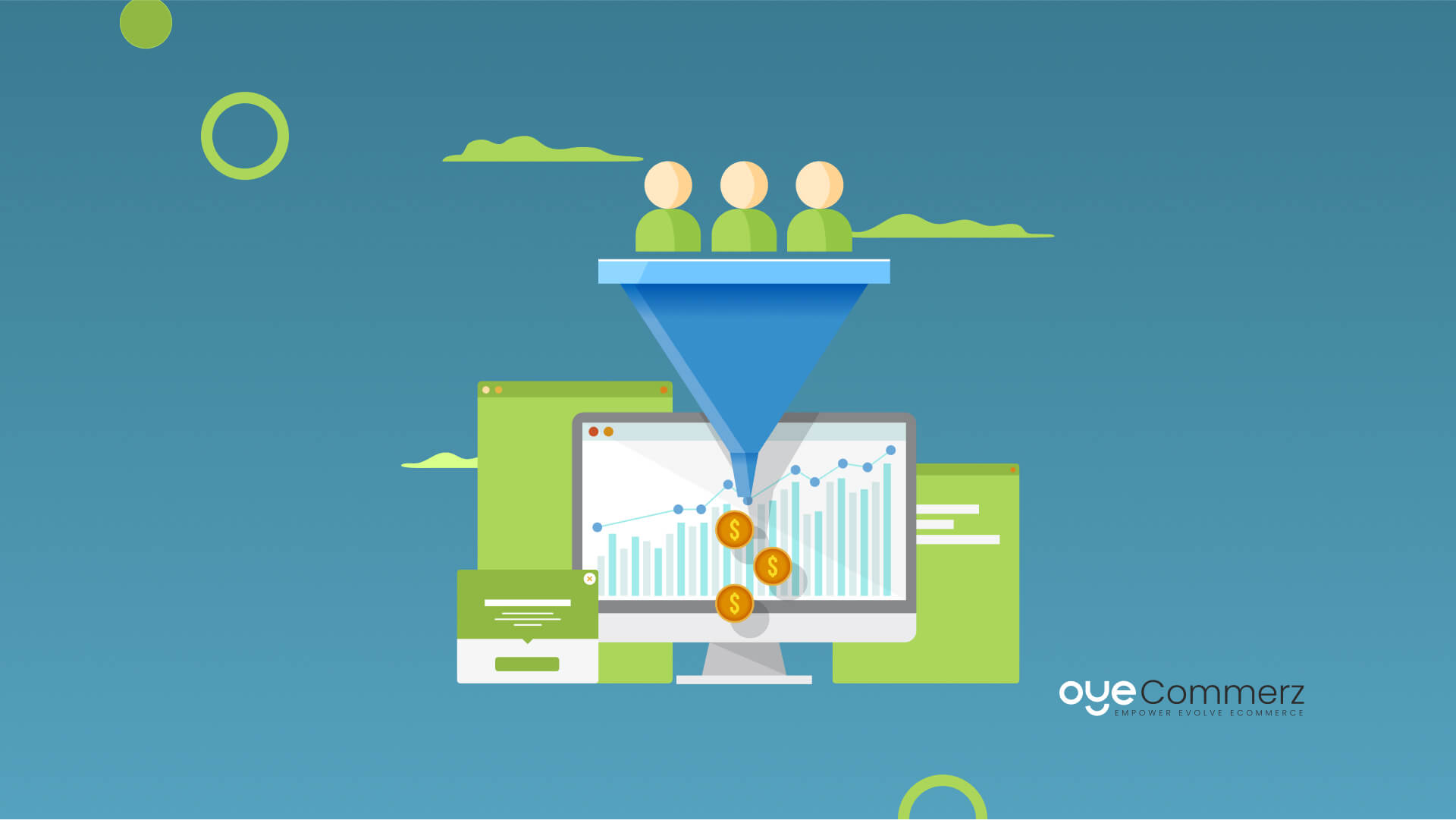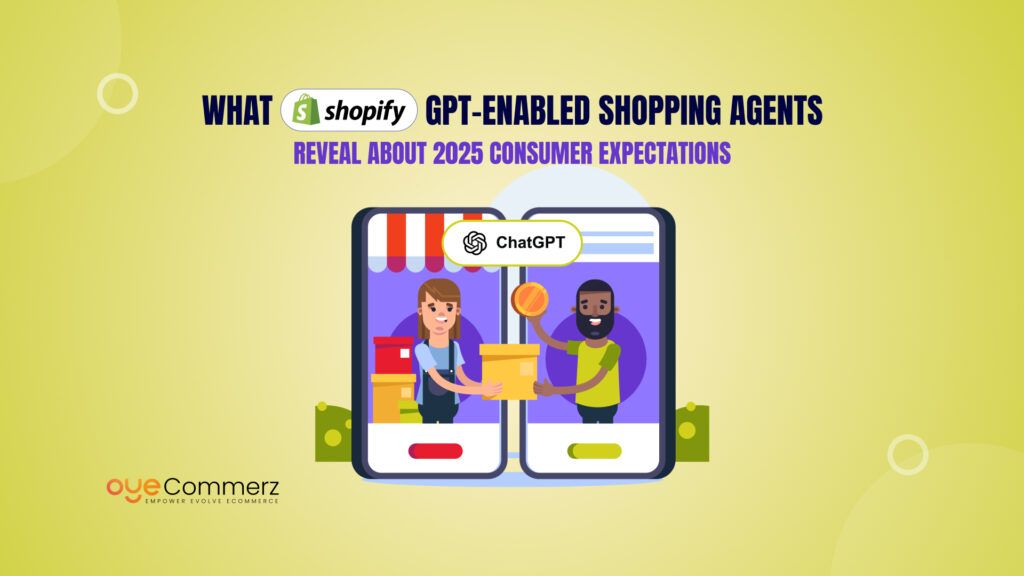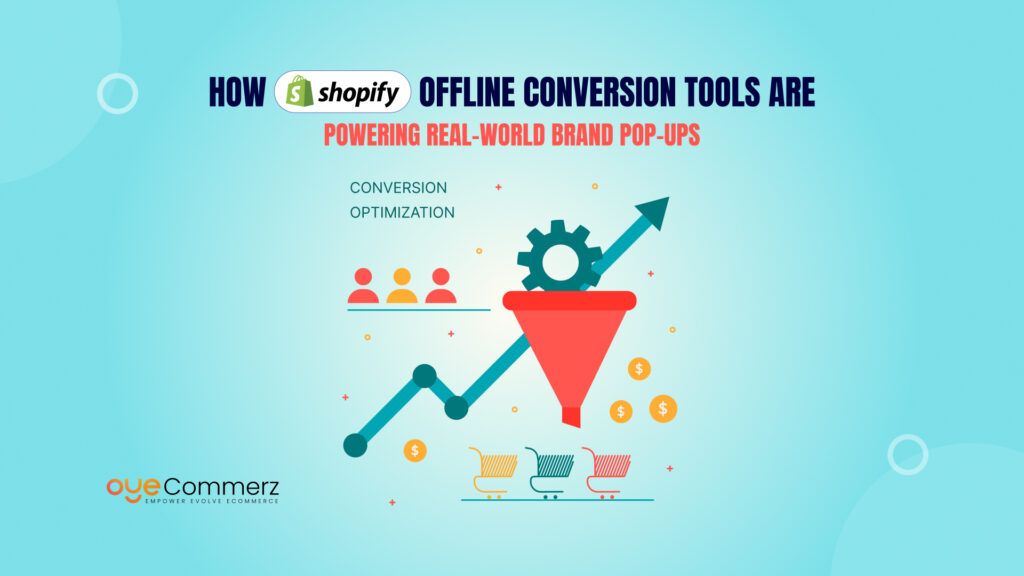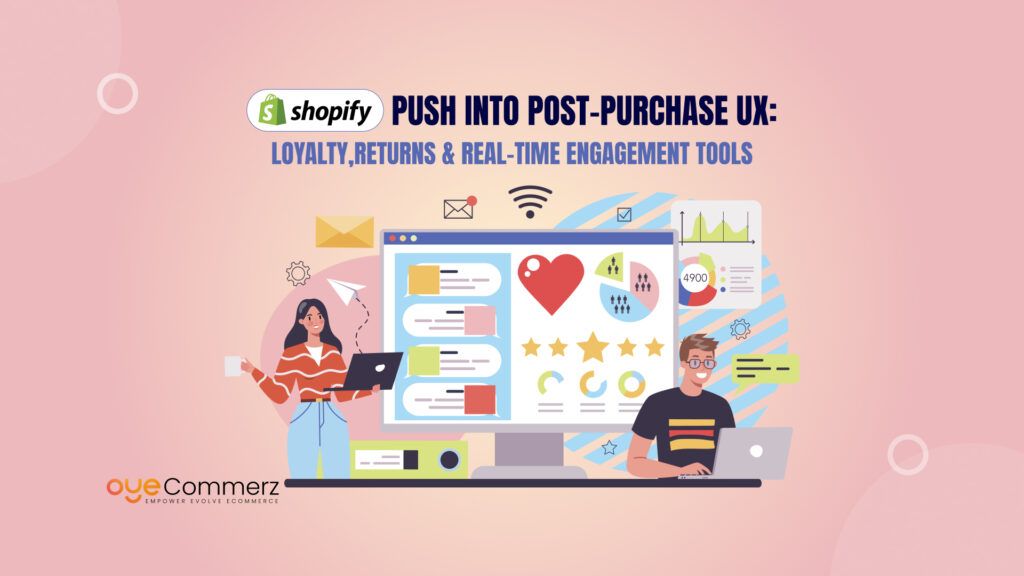E-commerce stores can be incredibly profitable, especially when you are using Shopify to manage it, however, it is not without its struggles and the main struggle most store owners face is to attract and convert visitors into buyers. Marketing Metrics require meticulous analysis and this is a fundamental strategy that should be employed in enhancing the effectiveness of your online store. In this blog section, you will learn about CRO as a concept and 15 techniques that can help improve the conversion rate of your Shopify store.
What is Shopify Conversion Rate Optimization?
Conversion Rate Optimization (CRO) refers to the process of making specific alterations to your Shopify site to get a higher number of visitors to complete a particular action such as making a purchase, subscribing to a newsletter, or adding a product to the cart. CRO is the process of analyzing, improving, and optimizing visitors’ experience on a website with a combination of data analytical approaches, user interface modifications, and marketing strategies. It is therefore an important tool to know and analyze your visitors and their behaviors to ease their shopping to increase their chances of performing the desired action.
Understand e-commerce conversion rates with these stats:
Industry experts report that average e-commerce conversion rates typically range from 2.5% to 3%. While this provides a useful benchmark, it shouldn’t be viewed as the definitive goal for your business. It’s crucial to continually enhance your conversion rate through various optimization strategies.
A detailed survey by the Shopify analytics app LittleData revealed that the average conversion rate for Shopify stores is around 1.4%. If your conversion rate is below 0.5%, there’s significant potential for improvement. Conversely, achieving a conversion rate above 3.3% is considered excellent, placing your store in the top 20% of all Shopify stores.
Table of Contents
ToggleTop 15 Tips To Get Your Shopify Optimized:
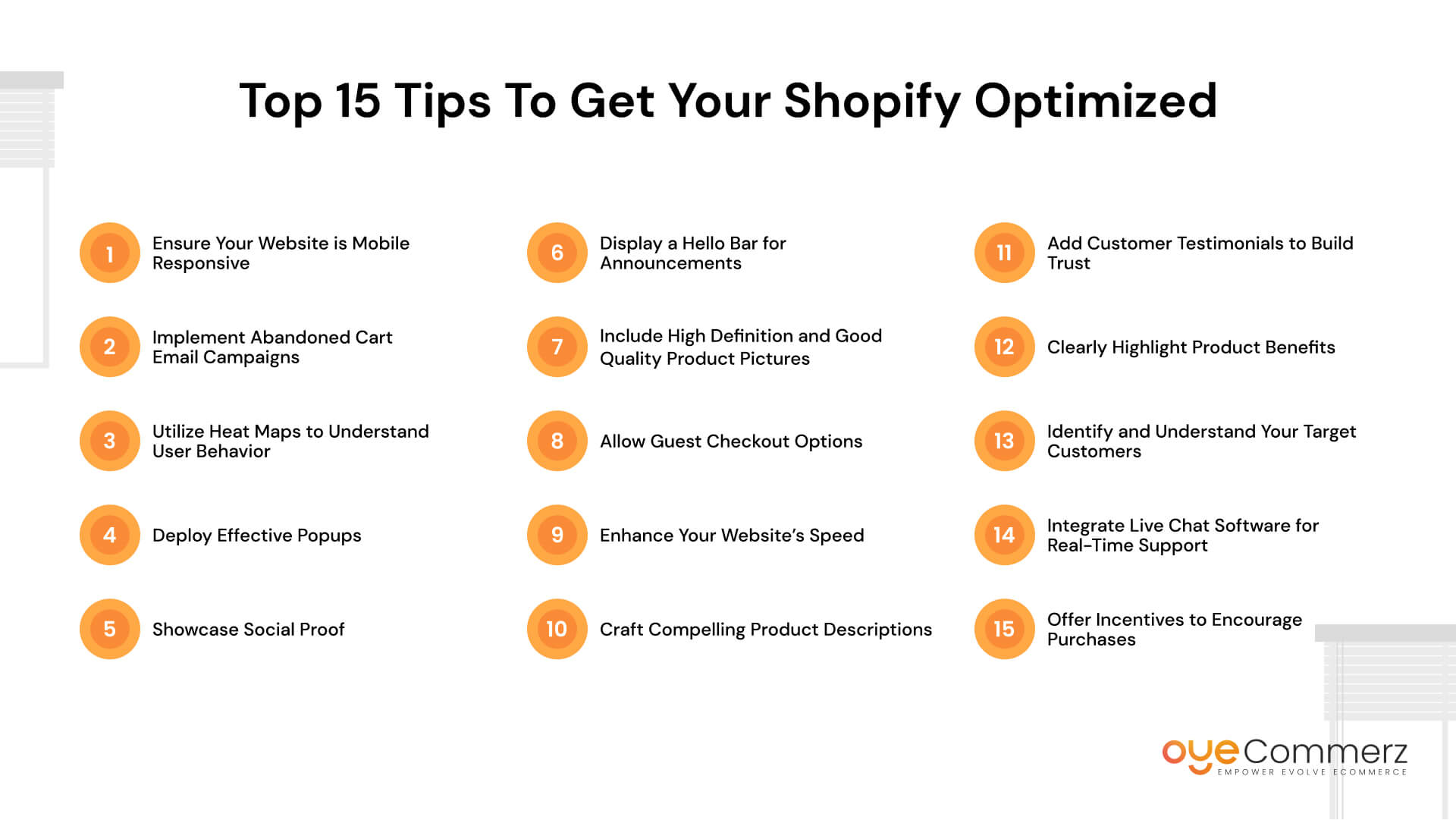
Ensure Your Website is Mobile Responsive
Since most people today use their mobile gadgets to shop online, it is imperative to design your Shopify store to be mobile-friendly. A mobile-responsive website is a kind of website design that is suitable for all devices with acceptable differences, depending on the given device’s size. It increases usability for the users and also helps to increase SEO ranking because Google helps those websites at the top of the ranking list that are mobile friendly.
Implement Abandoned Cart Email Campaigns:Cart abandonment emails are remotely triggered emails that are sent to customers who have left products in the checkout process without completing the purchase. These emails are indeed reminder type and at times could also contain the promo codes like money off or free delivery to entice the customers to complete the purchase. From the findings done on emails that have been abandoned, it has been seen that effectively created abandoned emails help in getting back 10-30 percent of the total sales.
Utilize Heat Maps to Understand User Behavior:
In intuitive heat maps, it is easy to represent the percentage of clicks, scrolls, and the time visitors spend on the site. It lets you know the level of engagement on your site and whether there are potential barriers to those converting. They should help identify which areas should be ignored while placing the main call-to-action buttons, which elements might require a redesign, and how to optimize a customer’s vision of the website.Deploy Effective Popups:
Popups are an excellent way to get leads and improve conversion rates although they are annoying. For example, pop-ups often initiate when a visitor is going to leave the website, telling them in the best deal if they choose to stay. Make sure that your popups suit the overall design, provide value, and are not annoying to users, which is important for their number one concern, the usefulness of the site.Showcase Social Proof:
Recommending the product/service of the store among peers, leveraging consumer-generated content, brand reputation, and trust increases trust in your store. Other customer reviews can also be placed on the product page and provided prominently if you want other prospective buyers to know they can place trust in your products. Furthermore, the implementation of instant buy verification prompts an impulse buying perception among users on the fence about making a purchase.Display a Hello Bar for Announcements:
It is an un-noticeable form of a notification bar commonly referred to as a Hello Bar that is located at the top of any site. OK, it is perfect for random notices such as when you have a sale, promotion, or even free shipping. This technique allows you to give the primary information right away so that the visitor will not miss it while scrolling through the page.Include High Definition and Good Quality Product Pictures:
When a customer is shopping online, there is no touch-and-feel experience a good product photograph goes a long way. Using multiple views and high-quality pictures of the products, customers are sure of the item they are getting hence maintaining low return rates. It would be appropriate to expand the sales page with good and lifestyle pictures to provide customers with a more complete and realistic vision of what the product is, what it looks like, and how it can be used.Allow Guest Checkout Options:
It can be very off-putting to establish that the customers are required to create an account before they can complete their order. Making it possible for the client to checkout as a guest means decreasing much of the work done in the buying process, hence the likelihood of losses due to cart abandonment. While it is still possible to offer the ‘create an account’ button after completing the purchase, it would be ideal to use the order details to prompt users into creating an account.Enhance Your Website’s Speed:
Website speed has a direct influence on the uptake, overall experience, and, usually the conversion rates. Since time is immaterial, slow-loading pages are likely to cause high bounce rates because visitors are not interested in waiting for a long time. There are several factors that you should consider when optimizing the speed of your site, for instance, images should be optimized, browser caching should be used, and JavaScript should be minimized. This and many more are freely available online tools such as Google PageSpeed Insights which point out some of the areas to be worked upon in terms of site performance.Craft Compelling Product Descriptions:
Product descriptions should not just contain information about what is contained in the product but try to sell in a way that would be appealing to the targeted audience. Promotional elements to focus on are the description of the key features, the explanation of the benefits, and the demonstration of how it can improve the customer’s life or solve his/her problems. To make your text more engaging, use Pavlov’s facial expressions and body language, and try to include the keywords within the post.Add Customer Testimonials to Build Trust:
Ever in any marketing campaign, customer references are an effective means in establishing confidence and credibility. This is why an occasional reposting of genuinely heartfelt praises received by happy customers can actually sway people’s choices. Webpage Placement: Don’t randomly place your testimonials! Instead, place them above the fold on the homepage, right under the product details on the product pages, and before the checkout button on the checkout pages to maximize their effectiveness at key points in the consumer’s decision-making process.Clearly Highlight Product Benefits:
It is this very detailed explanation on the part of the seller of what his or her products will bring to the table that assists the potential consumer in arriving at a decision about whether or not to make a purchase. The word choice should stress the customer’s needs or problems that your product enables the customer to solve. To ensure the visibility of these benefits, they should be presented in the form of bullet-point lists, diagrams, infographics, and short and clear headings.Identify and Understand Your Target Customers:
It is therefore important and perhaps basic to comprehend the needs of your target customers as a way of making improvements in the conversion rate. Make it a point to conduct some market research about your ideal customer and what he or she is like: Demographic information, interests, and concerns. Utilize the following data to adjust the positions, headings, body texts, color schemes, and products in correspondence to the demographics.Integrate Live Chat Software for Real-Time Support:
Chat is another useful tool since it enables you, as a webmaster, to promptly answer questions and address concerns from visitors in real-time. It helps avoid the situation when a visitor fails to find an answer to their question, and therefore, decides to leave your site. Make sure that you have people attending your live chat during business hours with basic customer service training to address standard questions.Offer Incentives to Encourage Purchases:
It is recommended to make use of rewards such as referral codes, free delivery, and one-for-one promotions as they may contribute to a boost in the number of purchases. The promotion strategies offered can also be deemed to have the effect of making the purchase more urgent while offering the customer extra value. In the limited stock availability concept, consumer response is the primary key that is used to control the rate of cart abandonment.
Transform Your Shopify Store into a Conversion Powerhouse with OyeCommerz!
Is your Shopify store facing a low or no conversion rate that is when your visitors are not turning into customers? At OyeCommerz, we understand the frustration of high traffic but low conversion rates. But, Our Shopify CRO Services are simple and can help you get the most out of your store.
Equipped with the best data analysis techniques and deep industry knowledge, we are here to help you convert your Shopify store. Eliminate lost sales and step into the era of customer attraction and retention.
Find out the best Shopify CRO services at OyeCommerz and experience growth in your online business today.
"Simplify navigation. A well-organized, intuitive site structure helps customers find what they need quickly, reducing frustration and boosting conversions."
Conclusion
Converting your Shopify store visitors to paying customers is a never-ending task, and it entails the ability to know your client, evaluate the data, and experiment and evolve. If you are convinced to adopt the 15 tactics mentioned above, you will increase the chance of having more satisfied and loyal customers when shopping online. The integration of these methods can help the website develop a layout that will ensure the shoppers are more involved and become repeat customers.
Just bear in mind that even minor enhancements to the landing page can result in large gains in your conversion rate and therefore your total amount of sales. Be creative and always aim to meet the needs and wants of customers and see your Shopify business grow.

